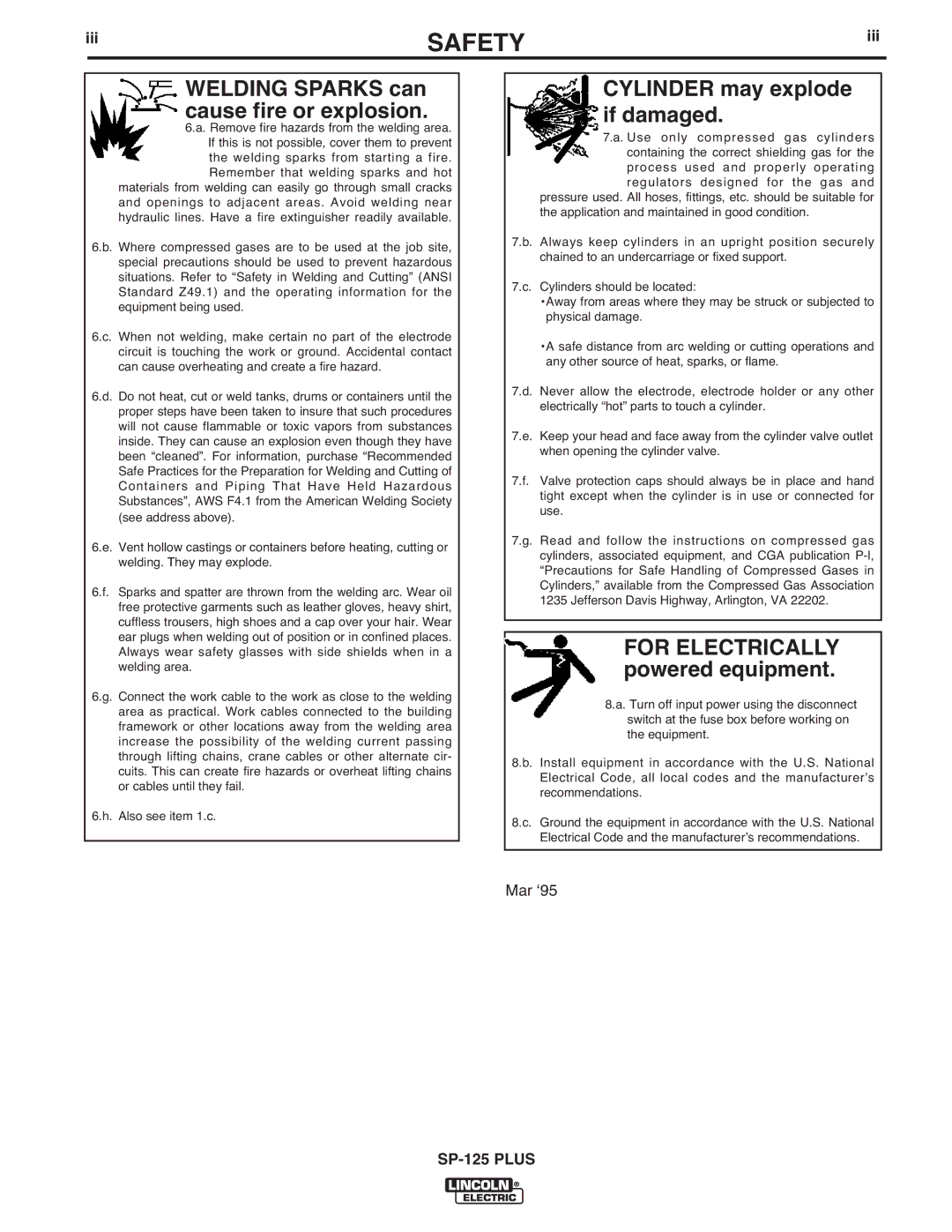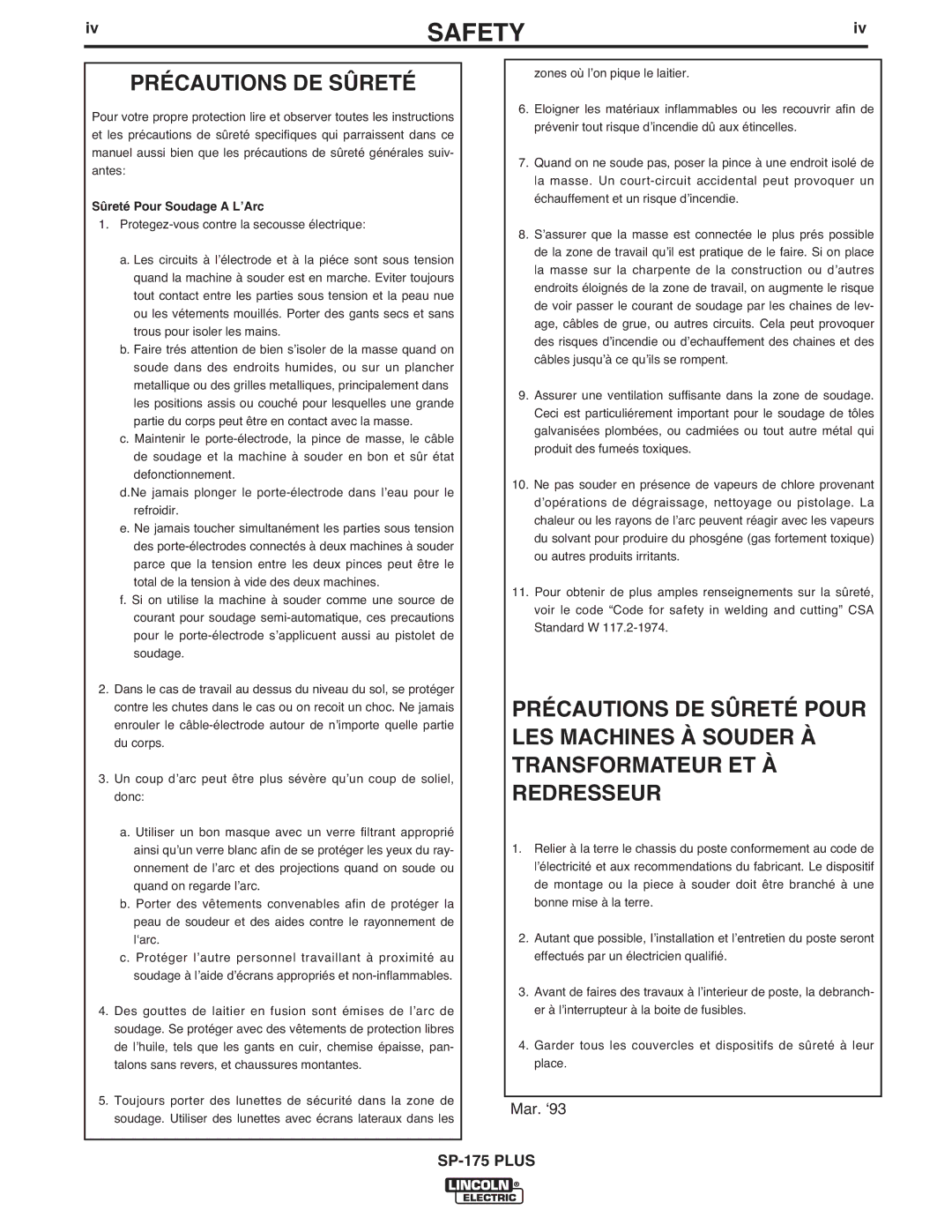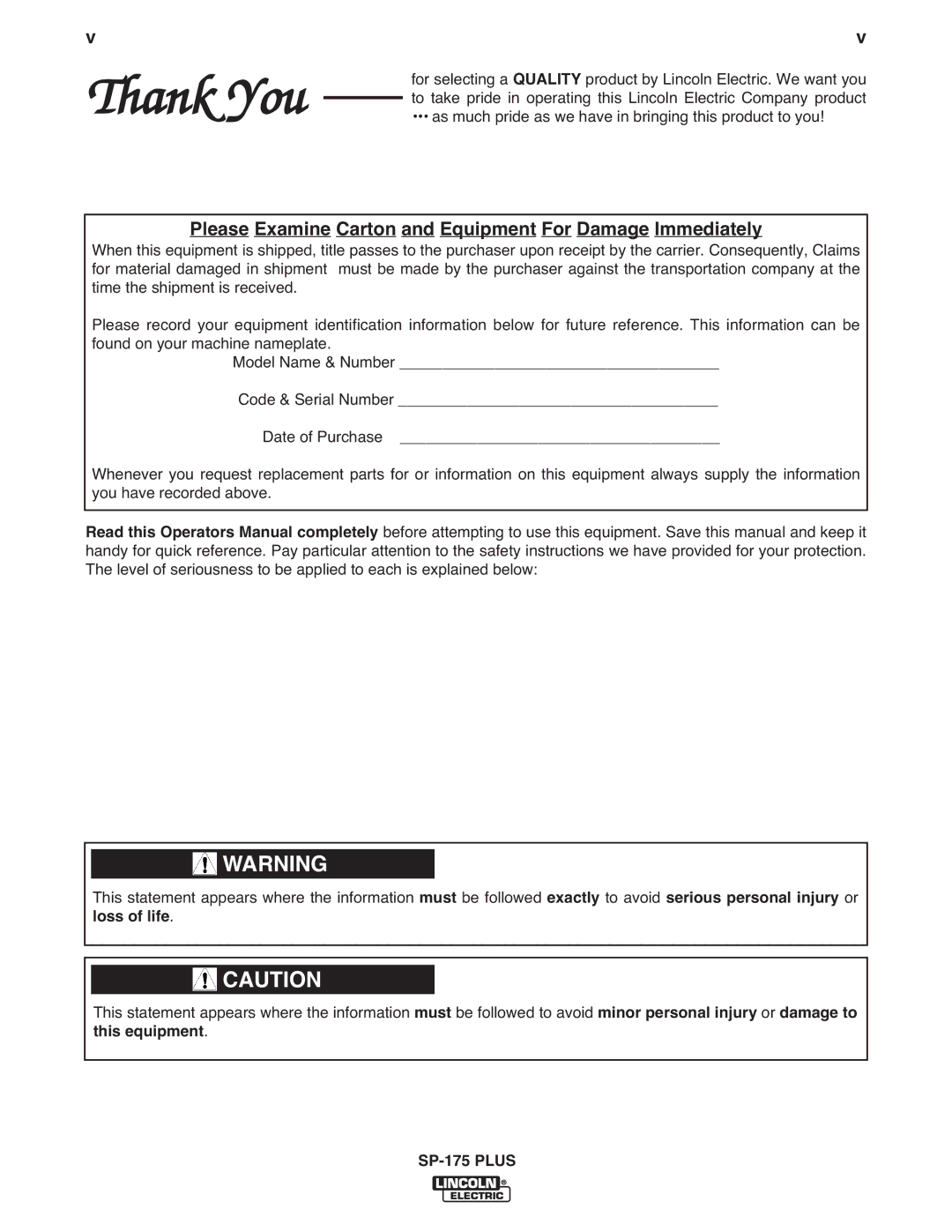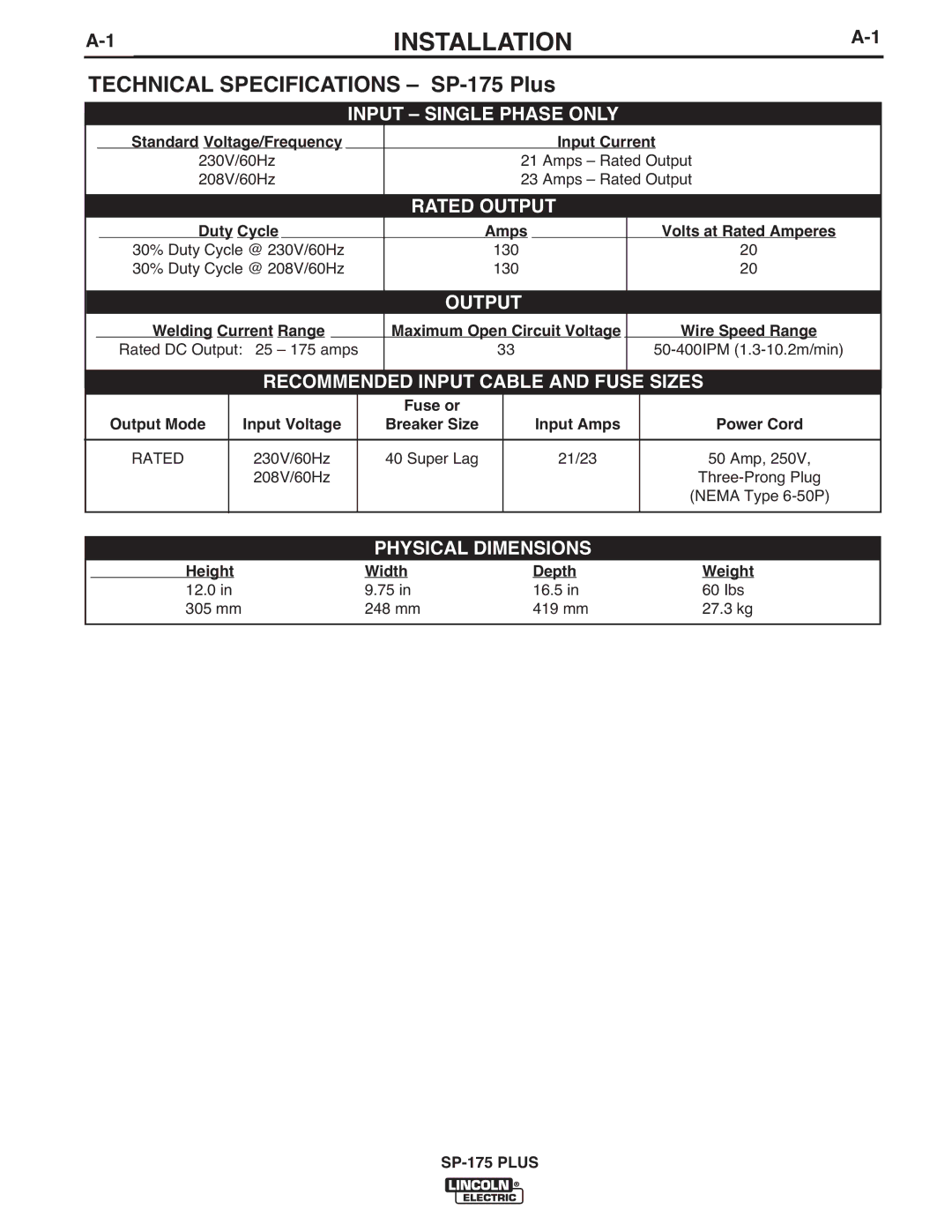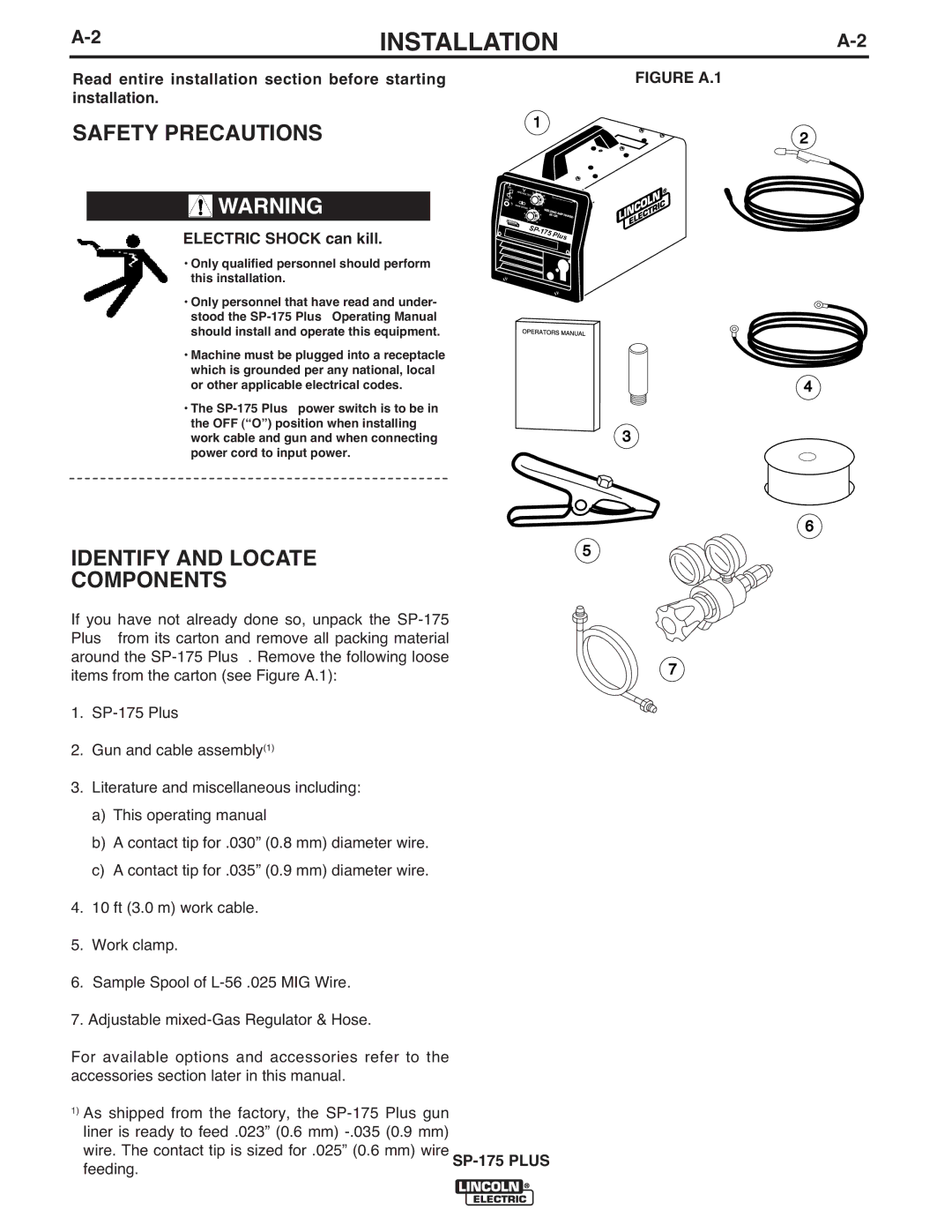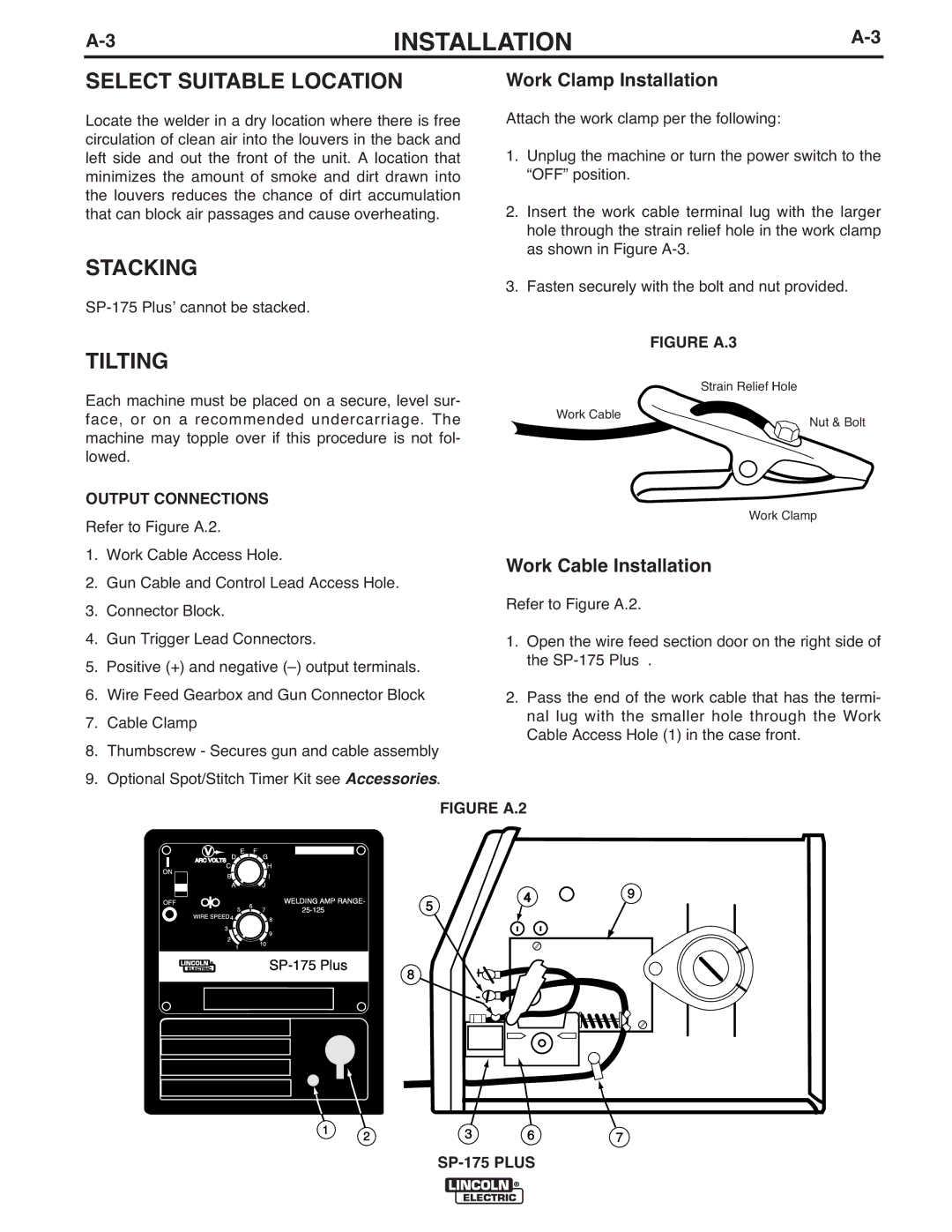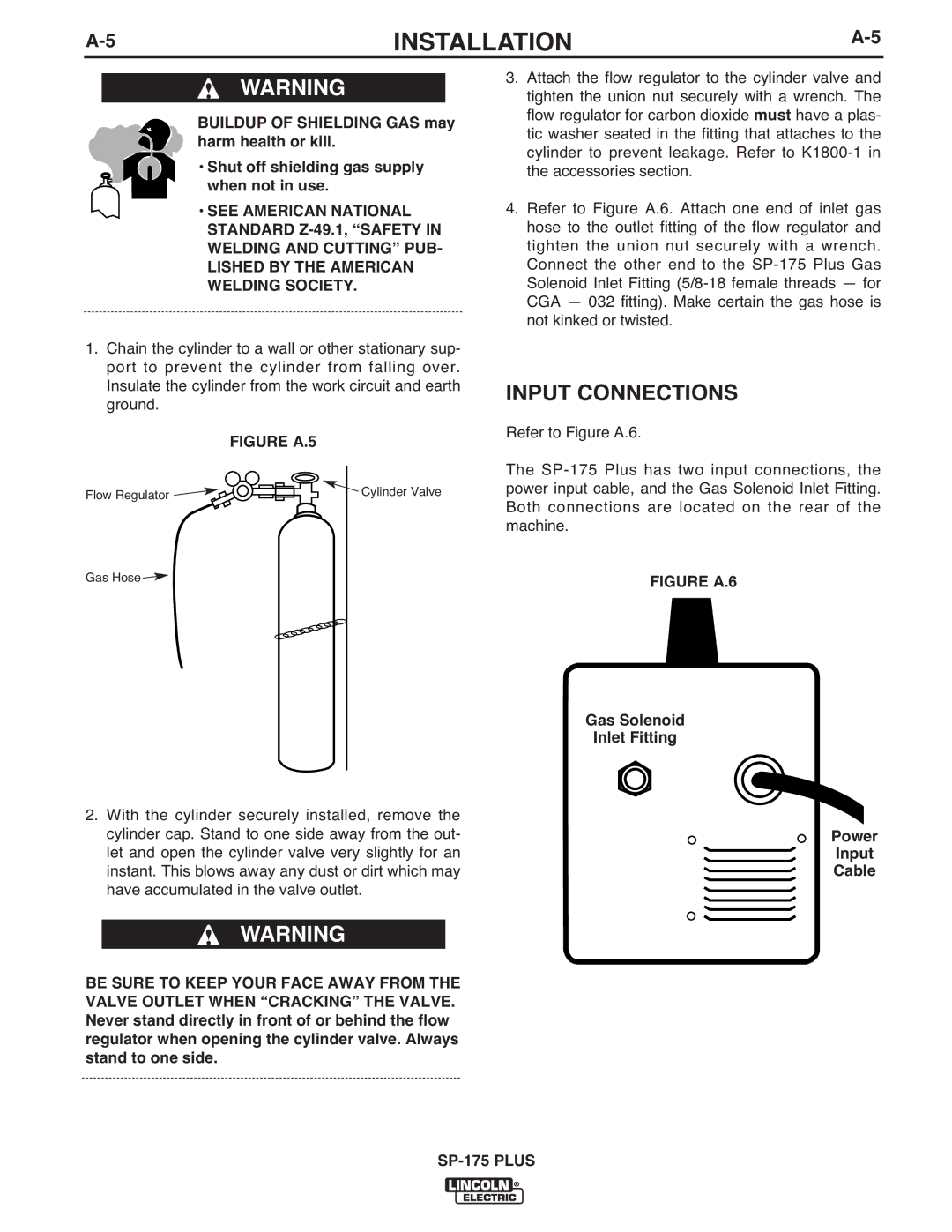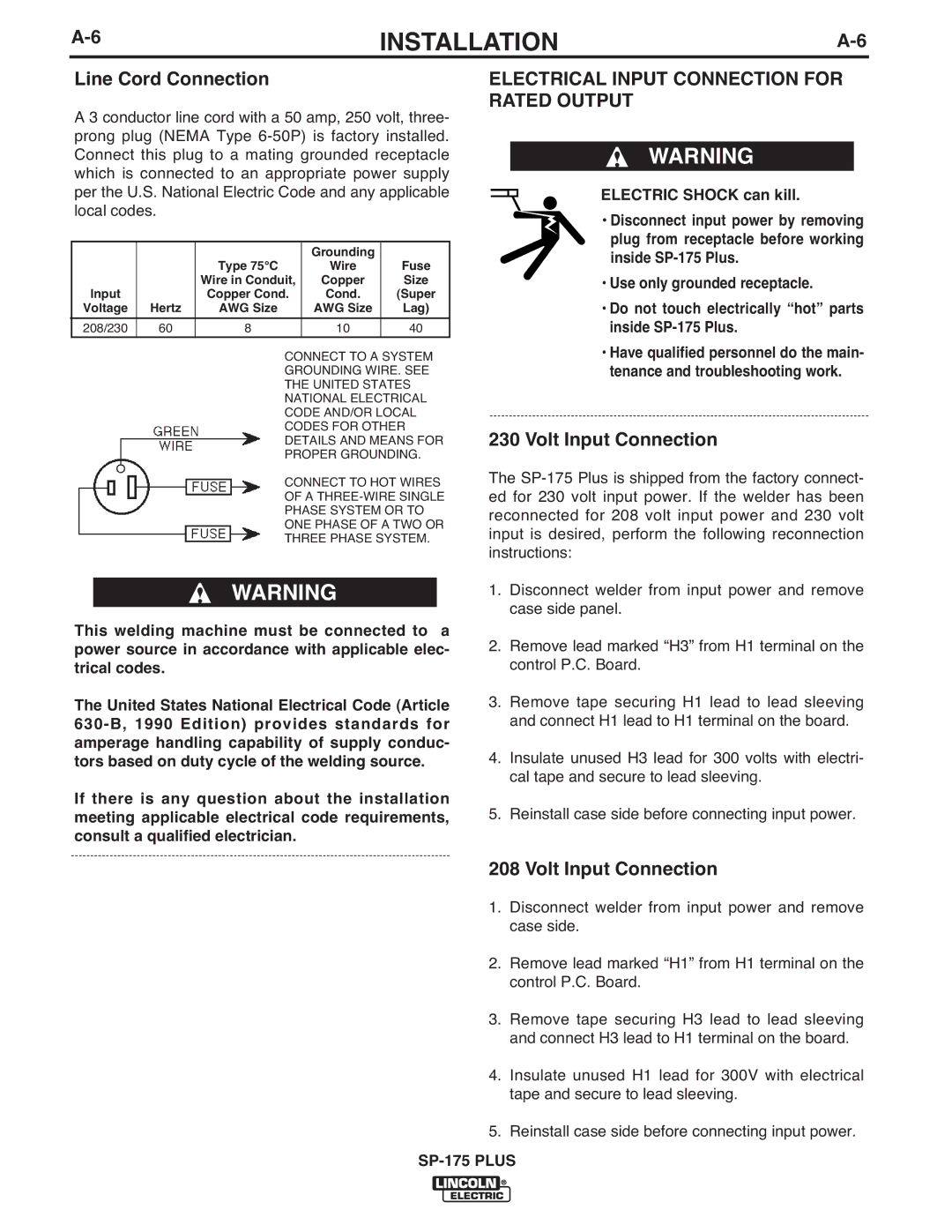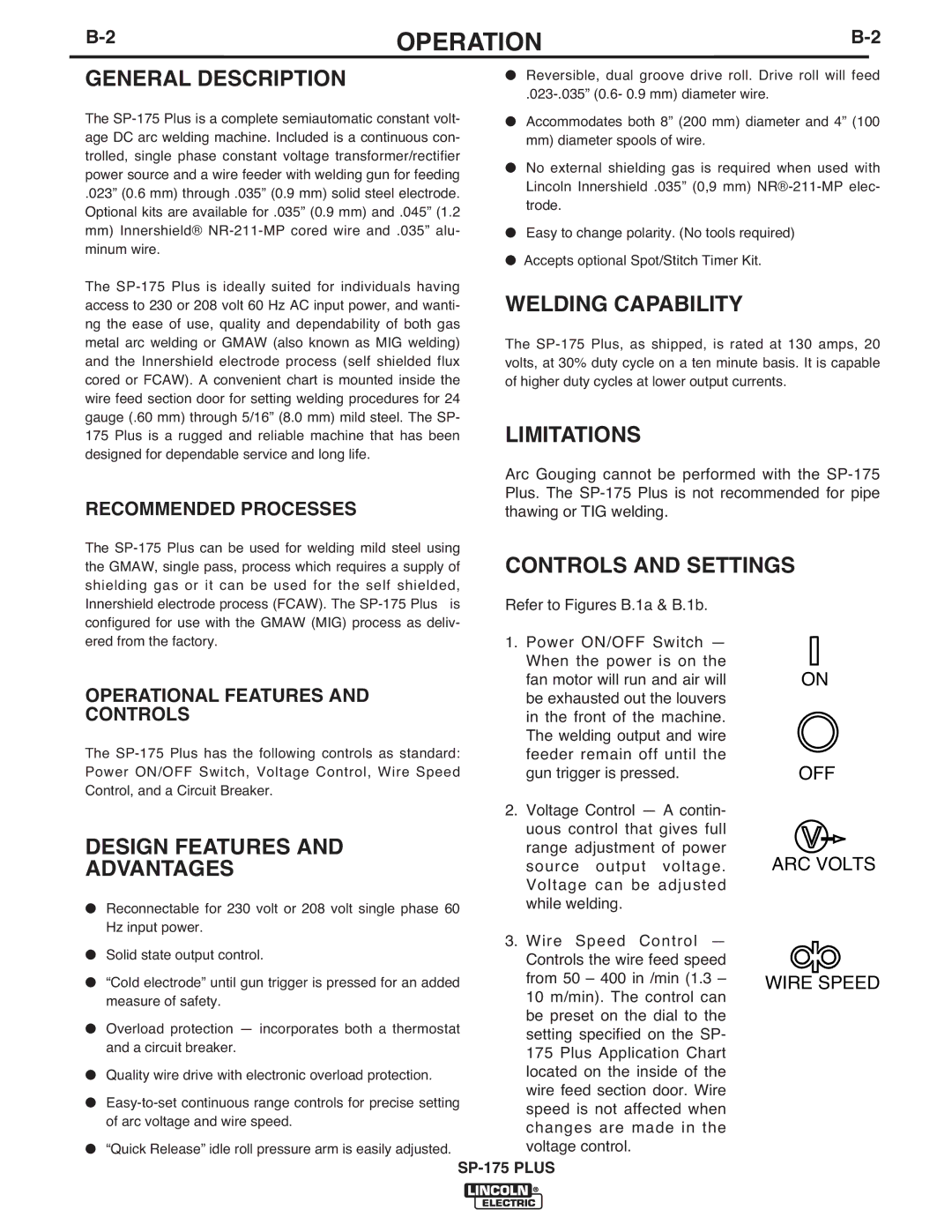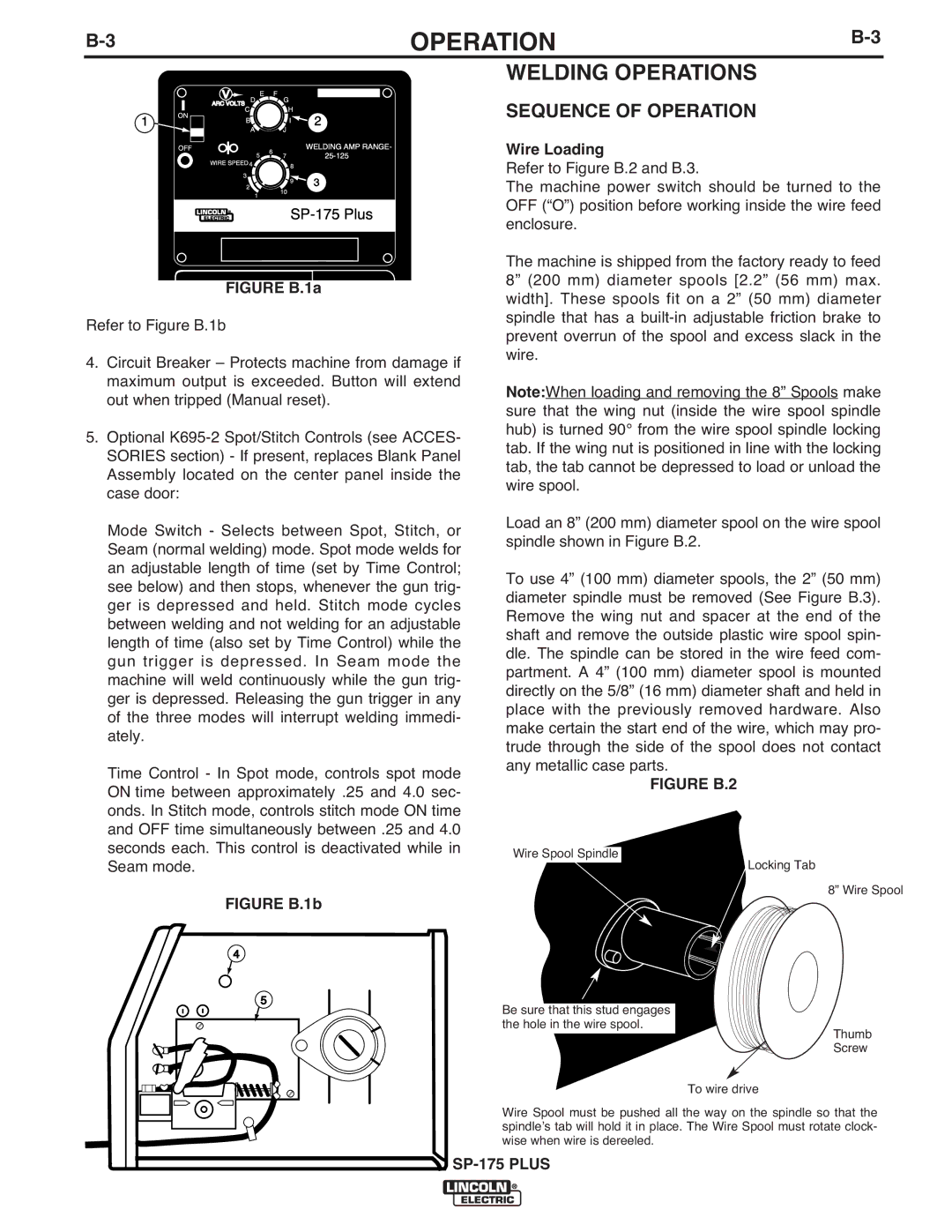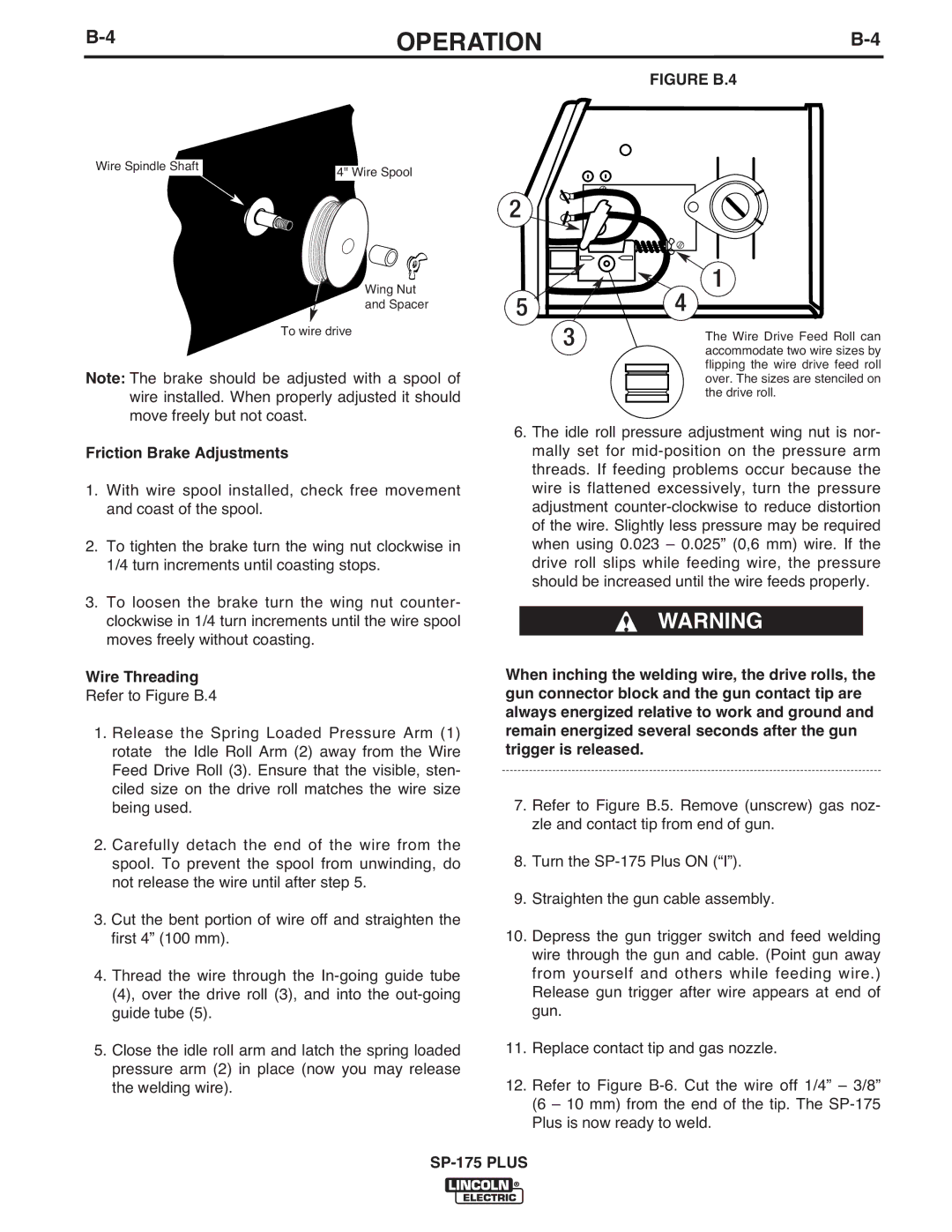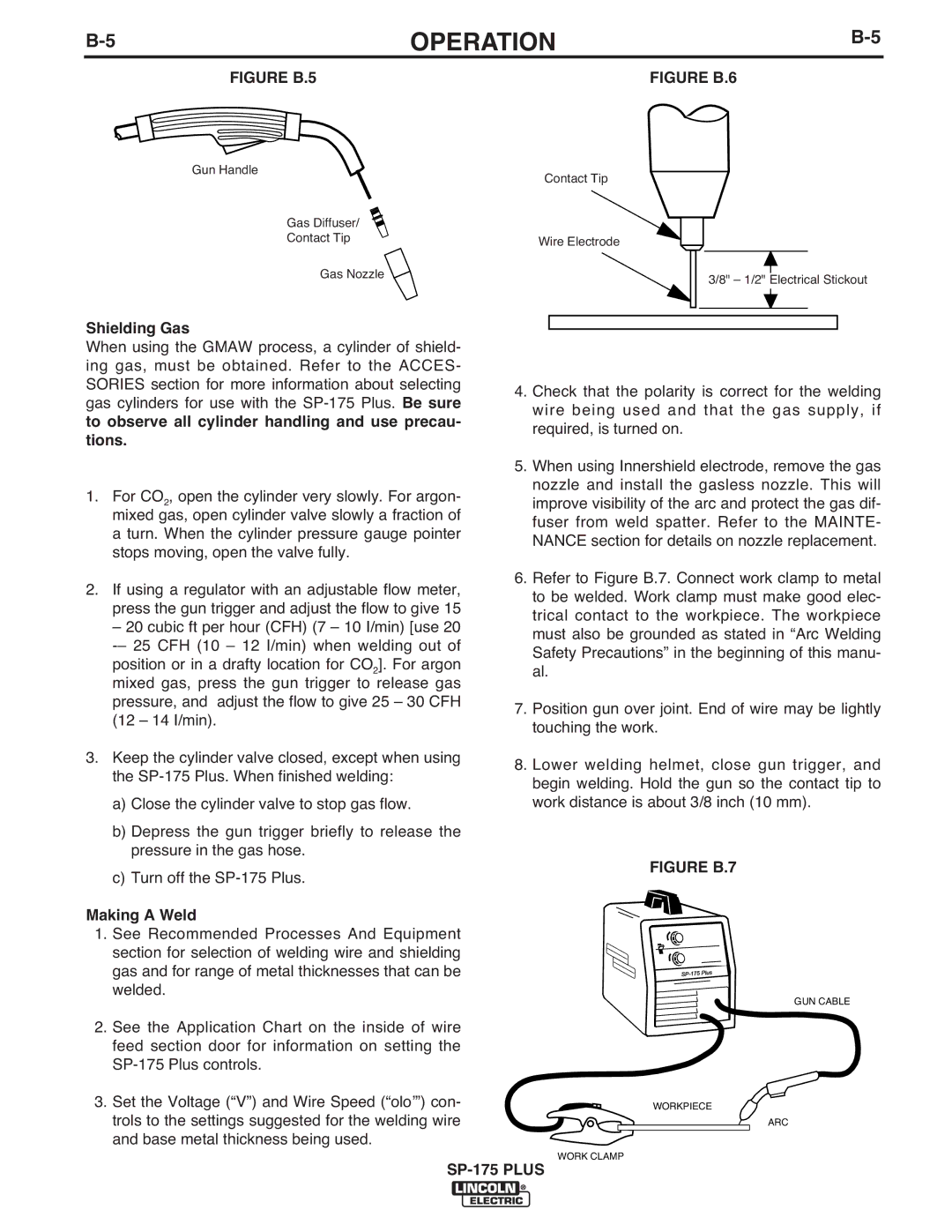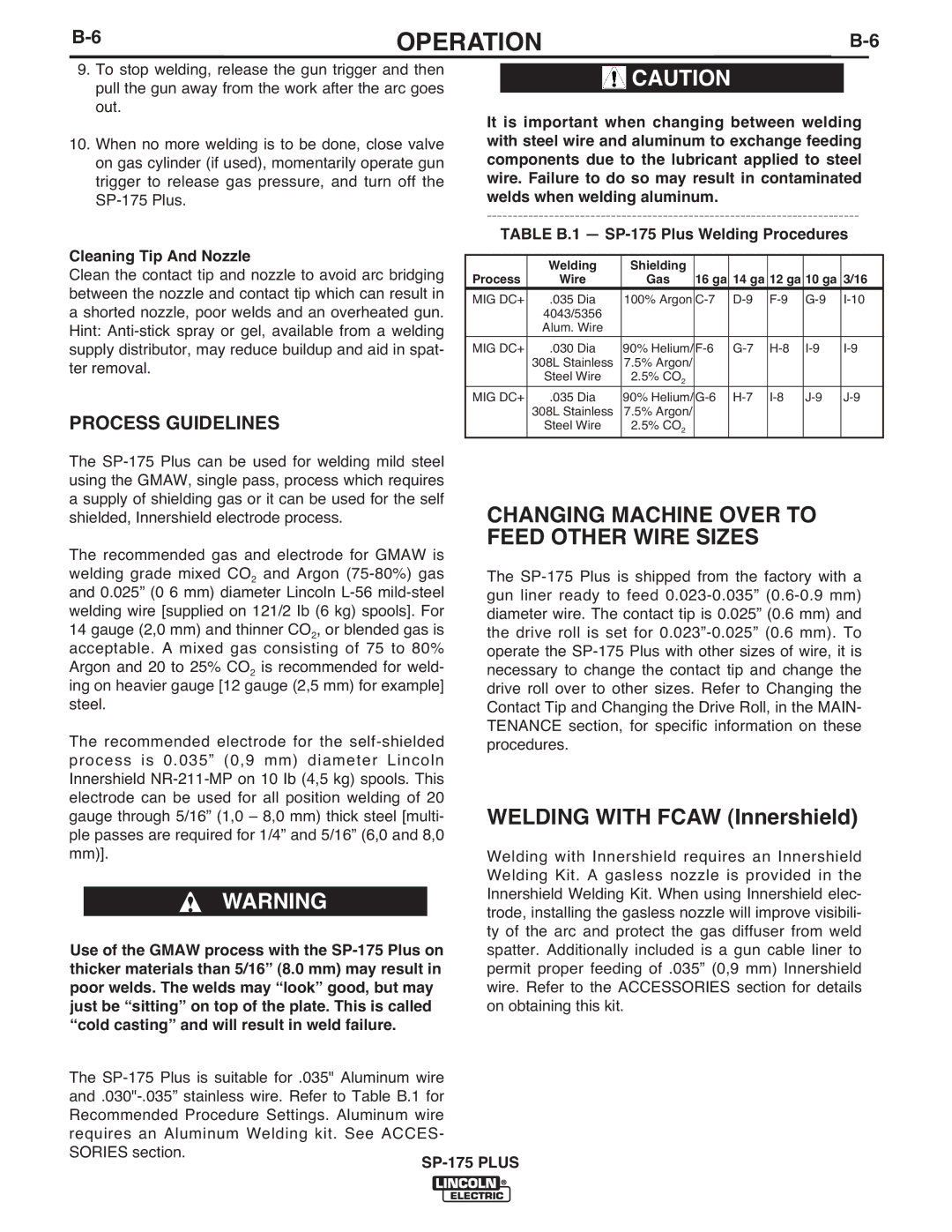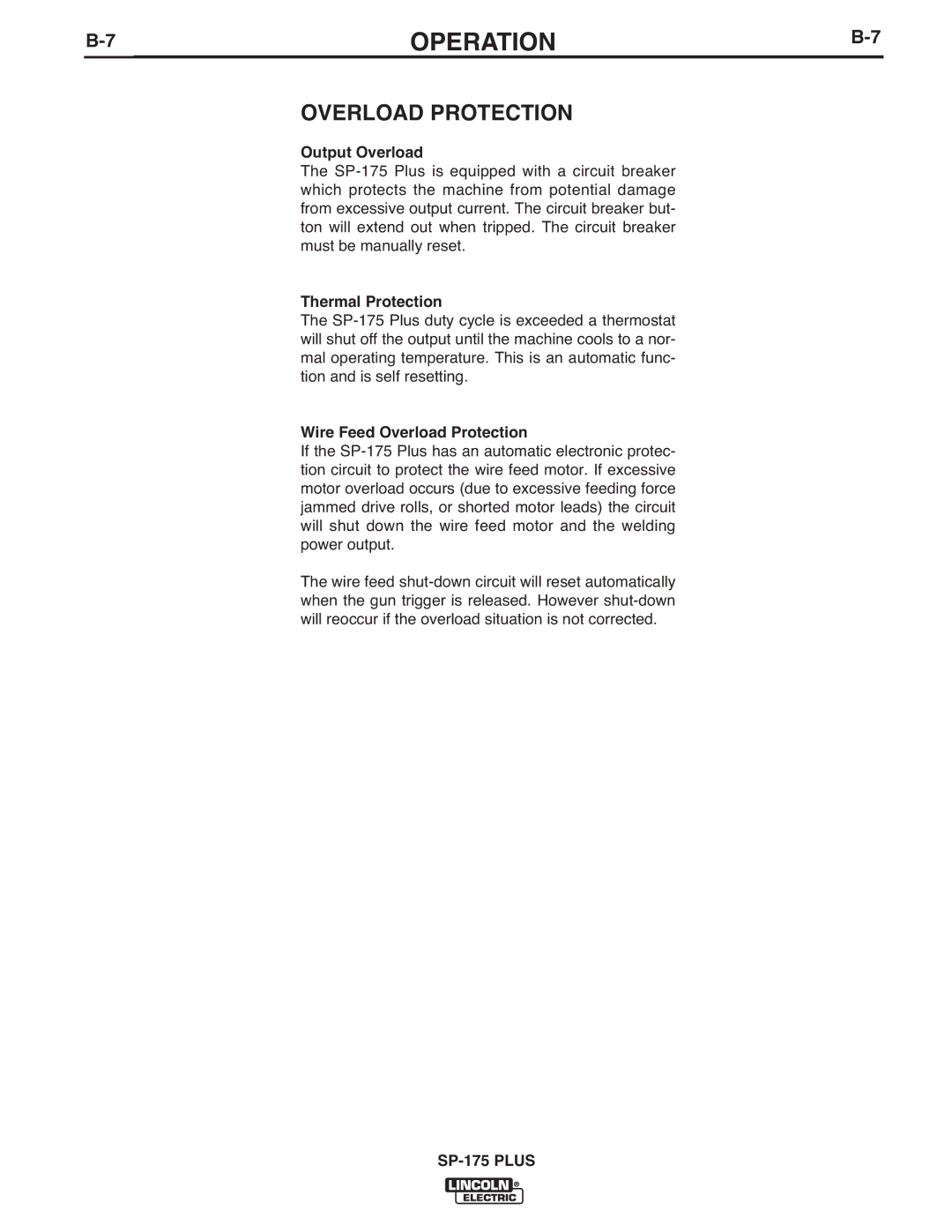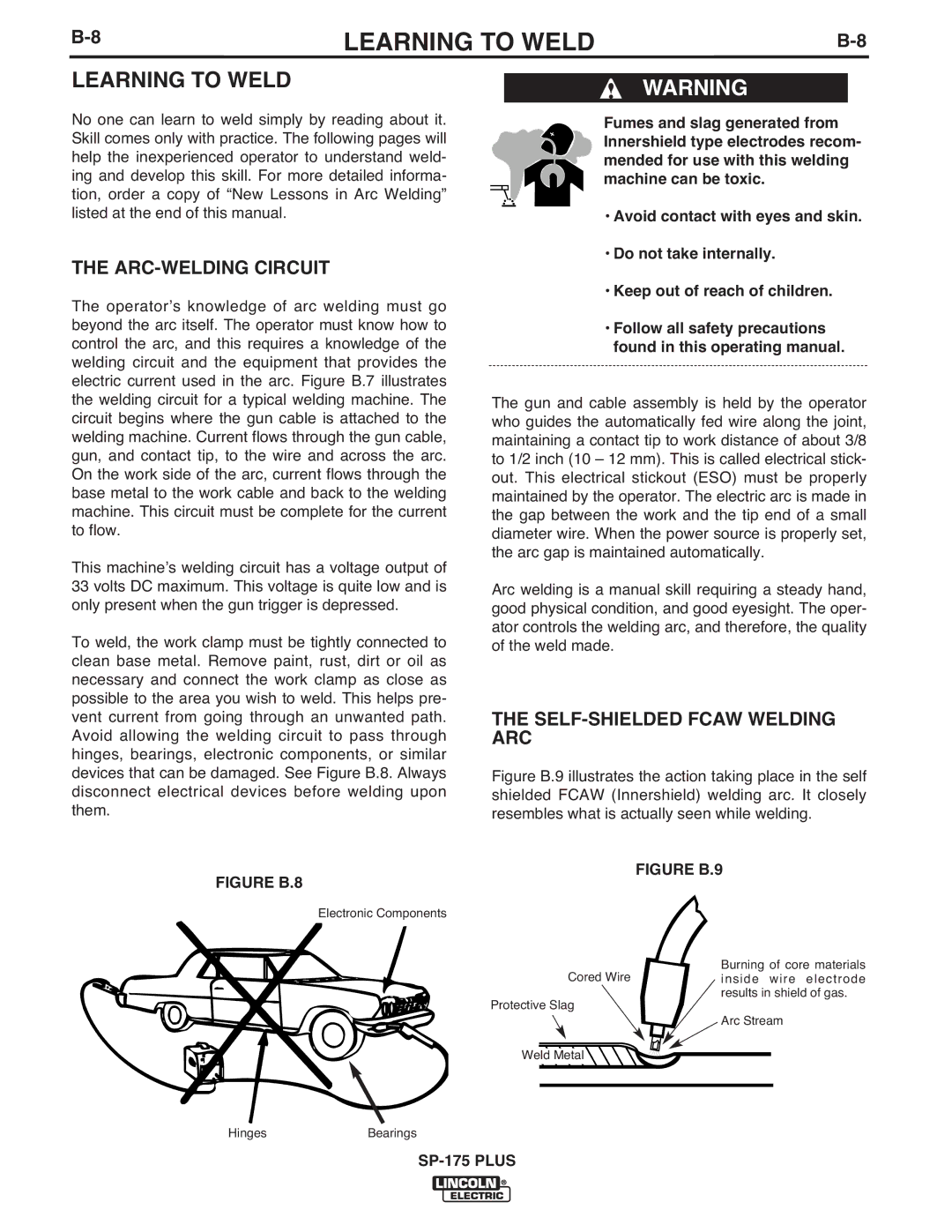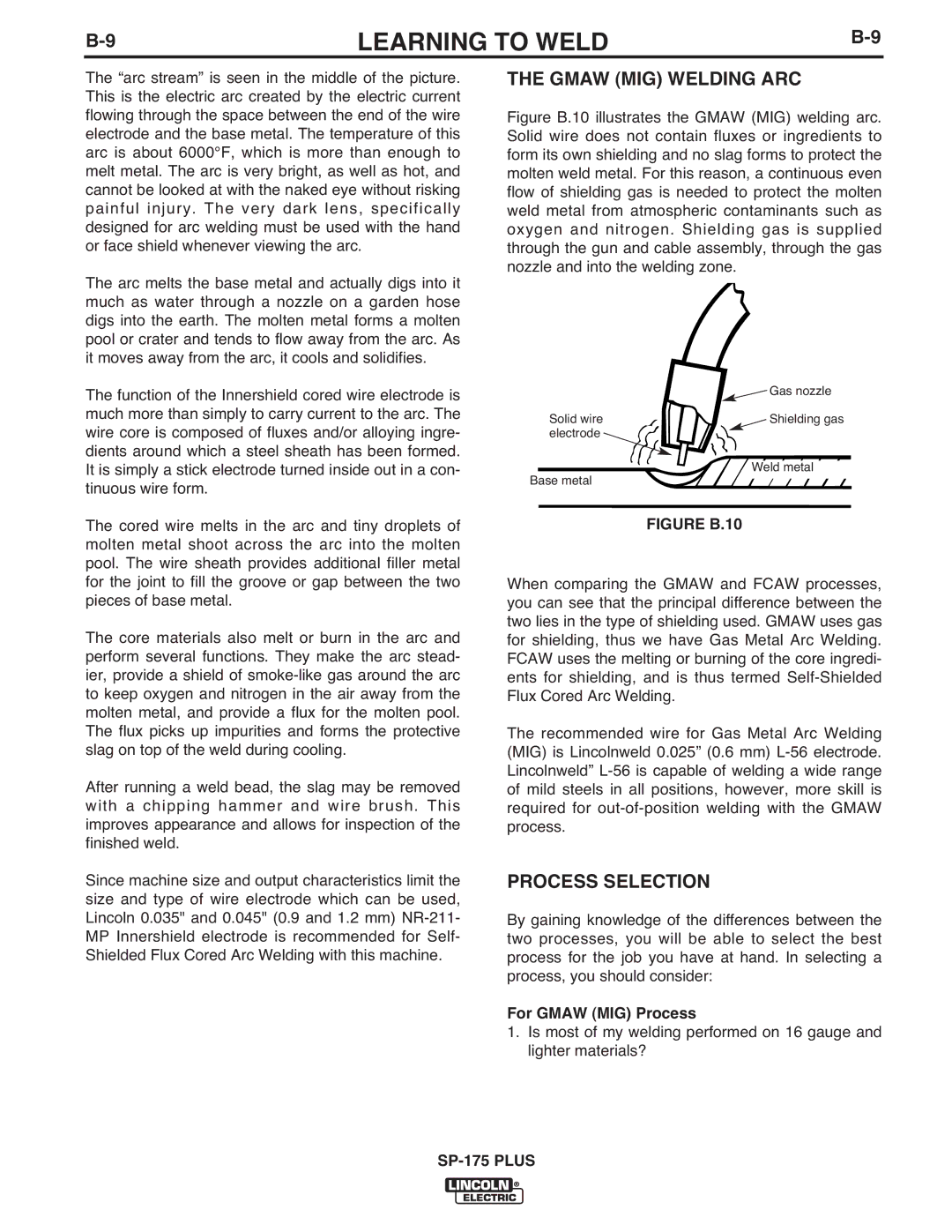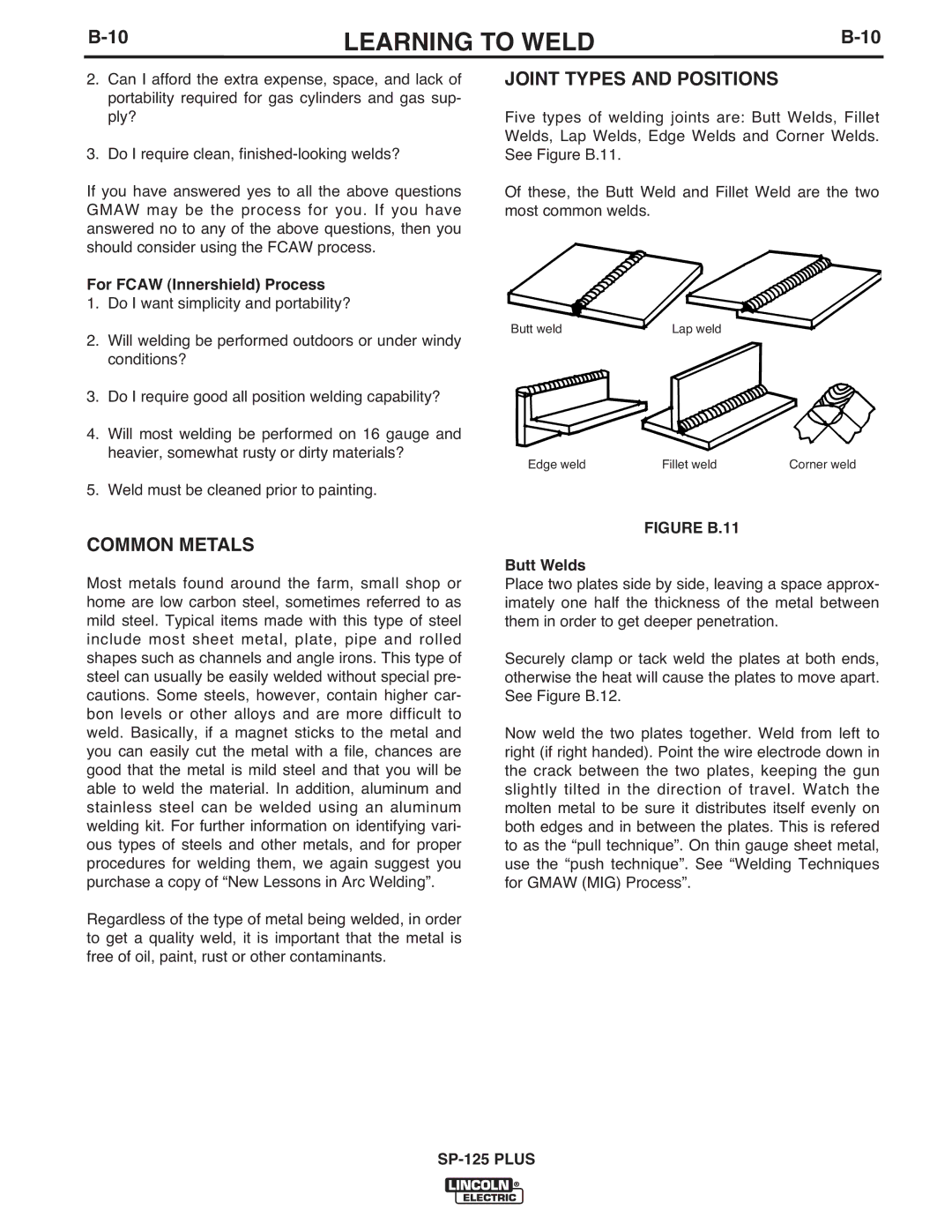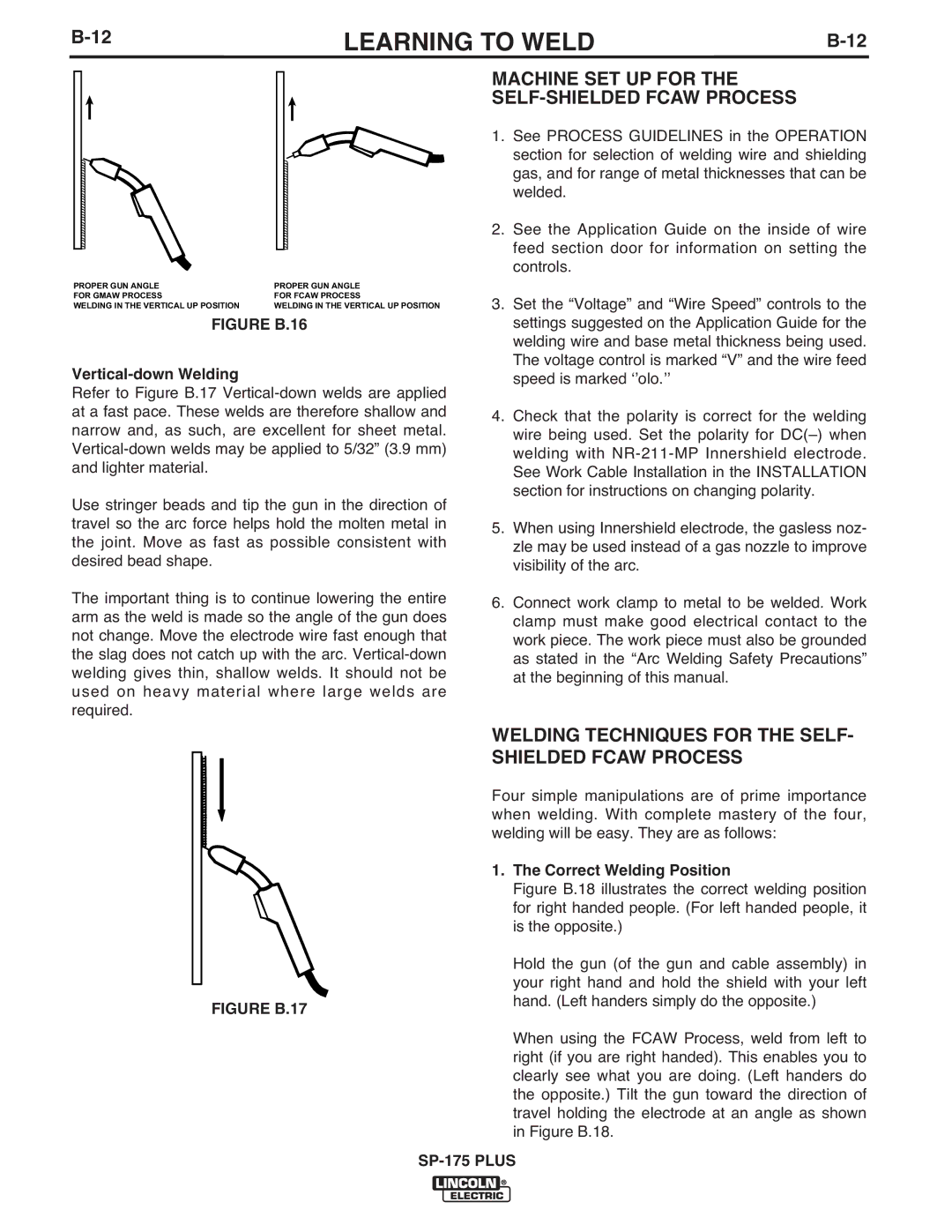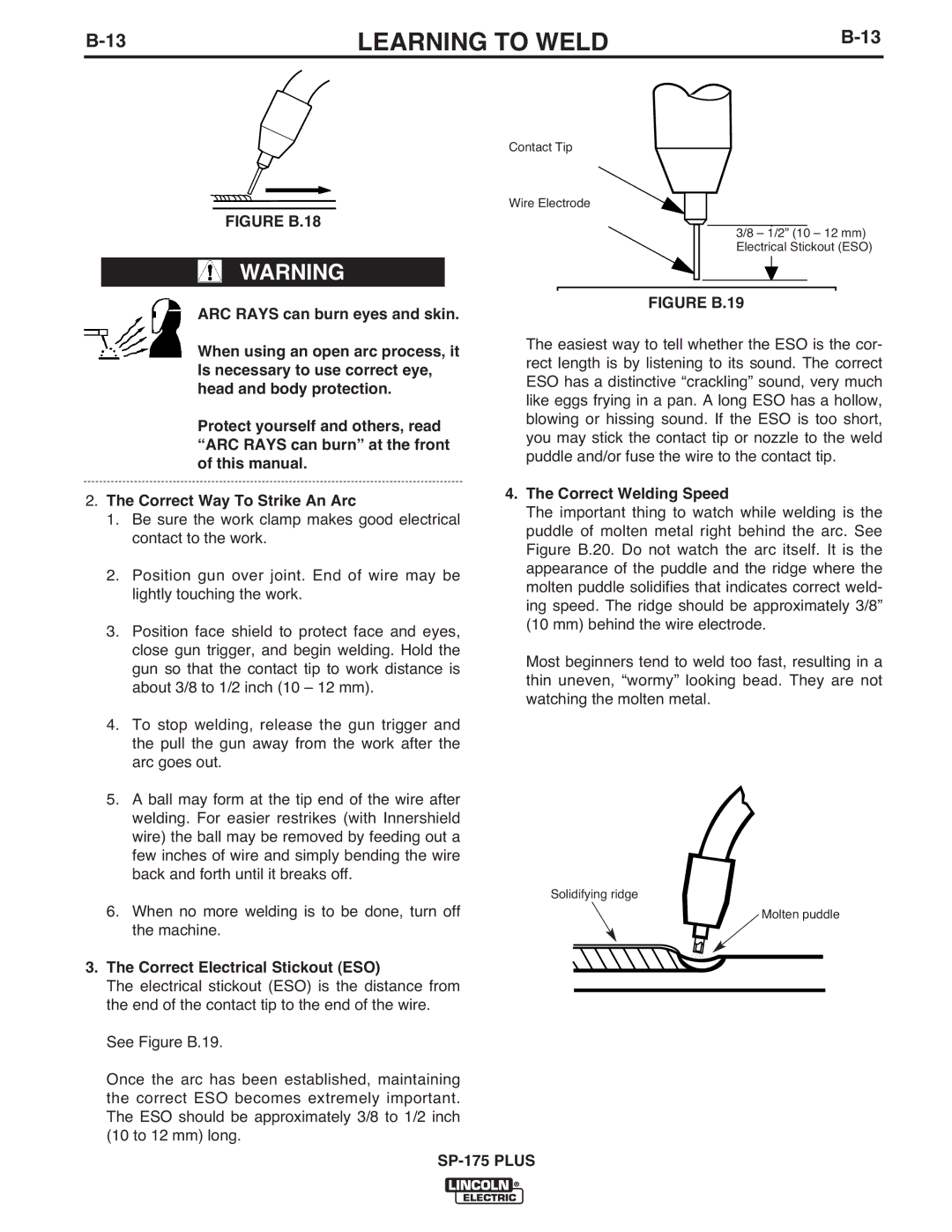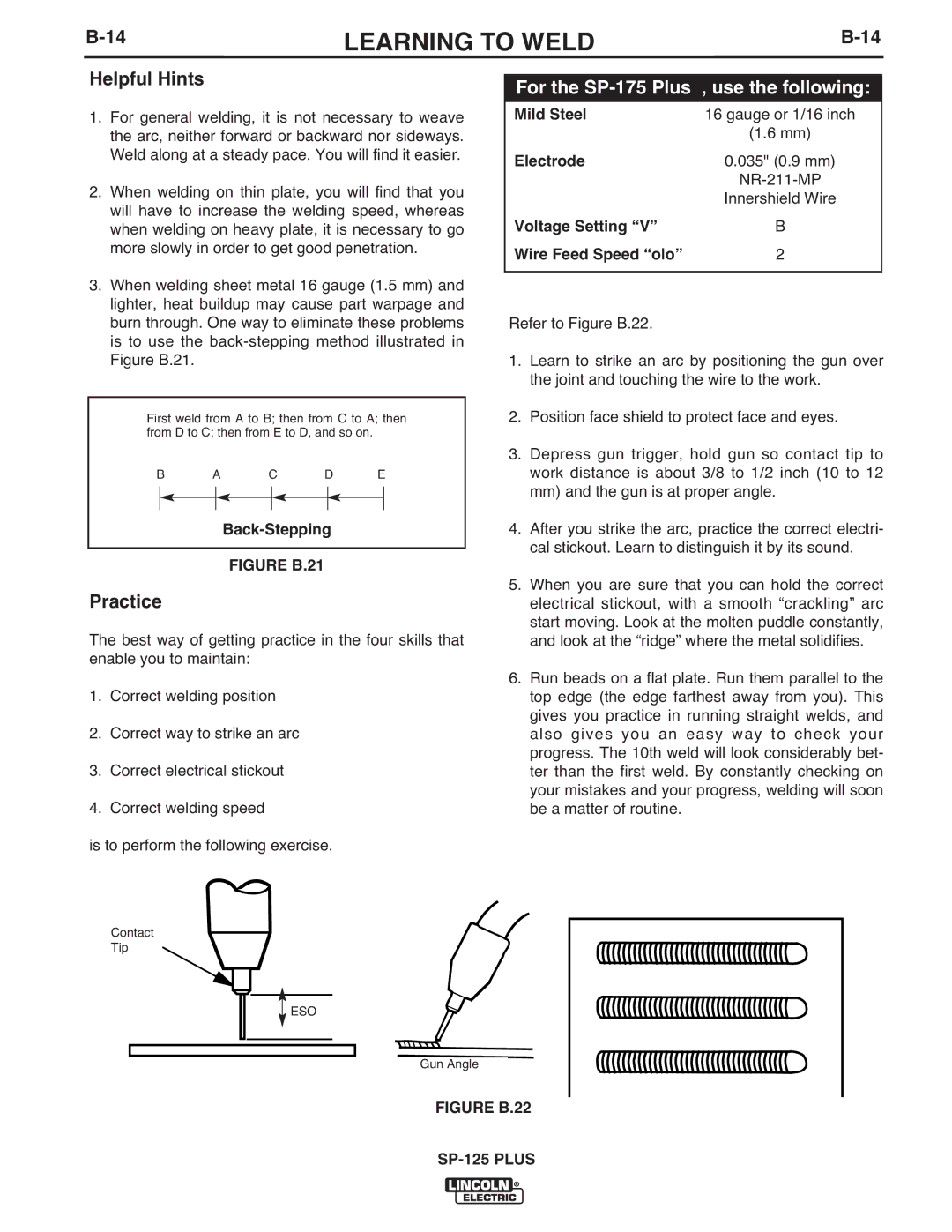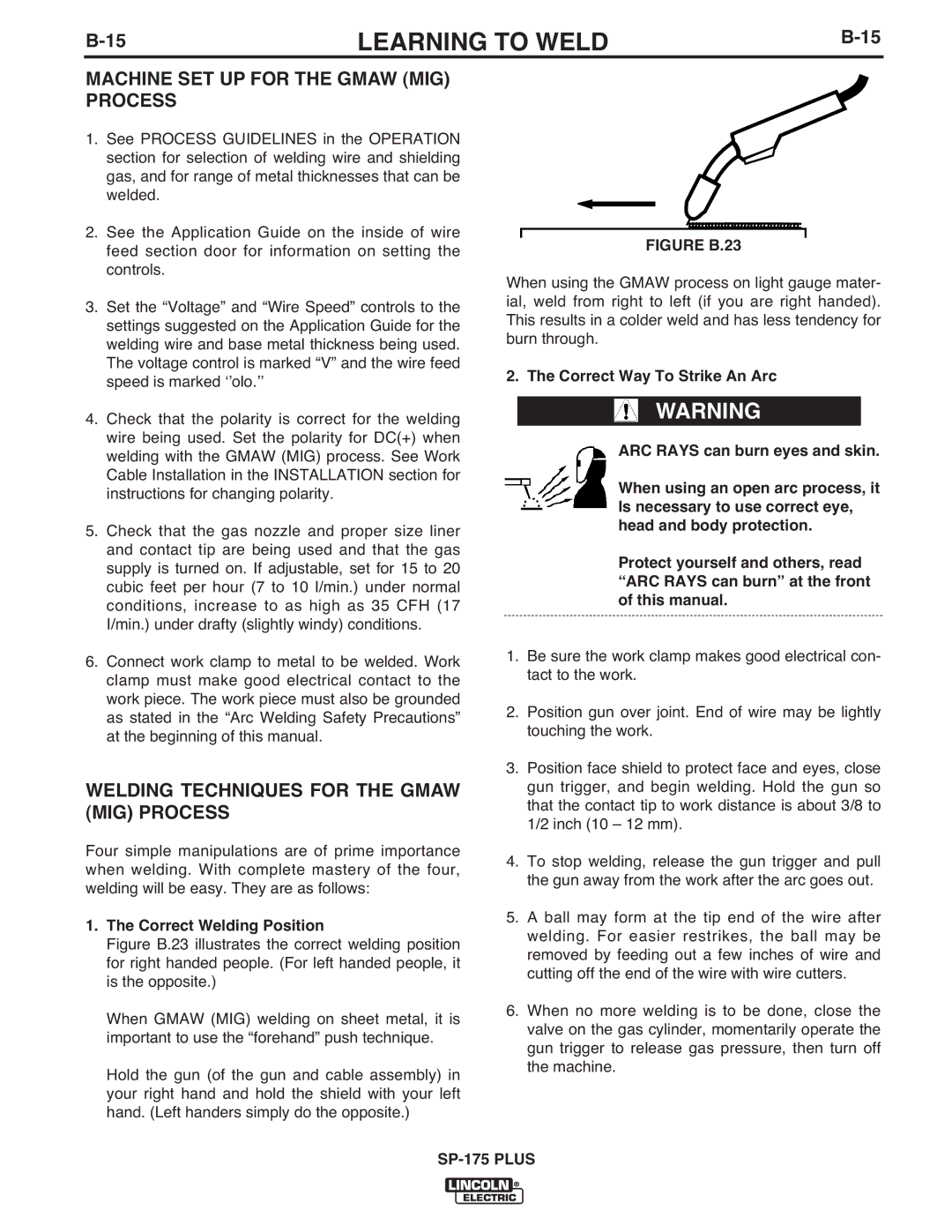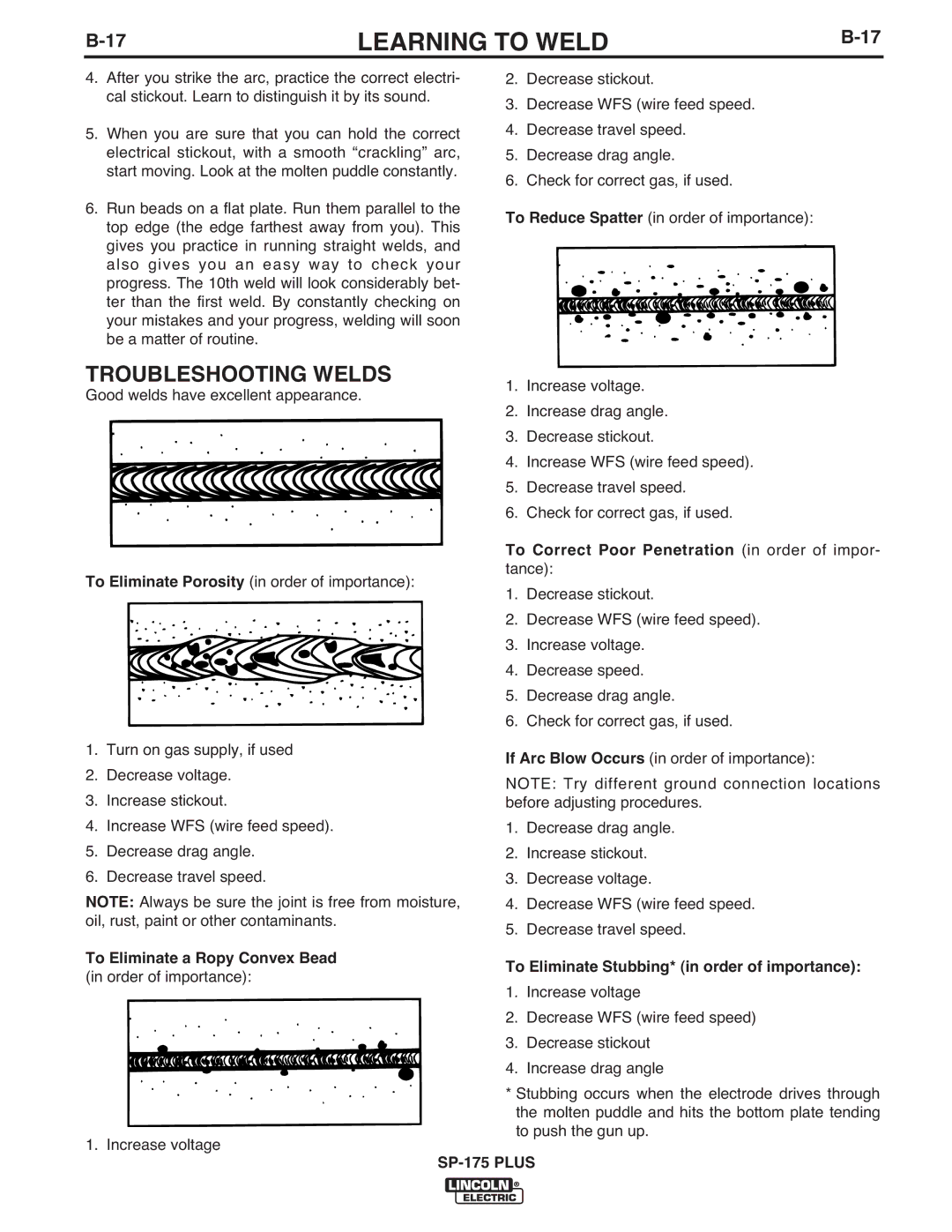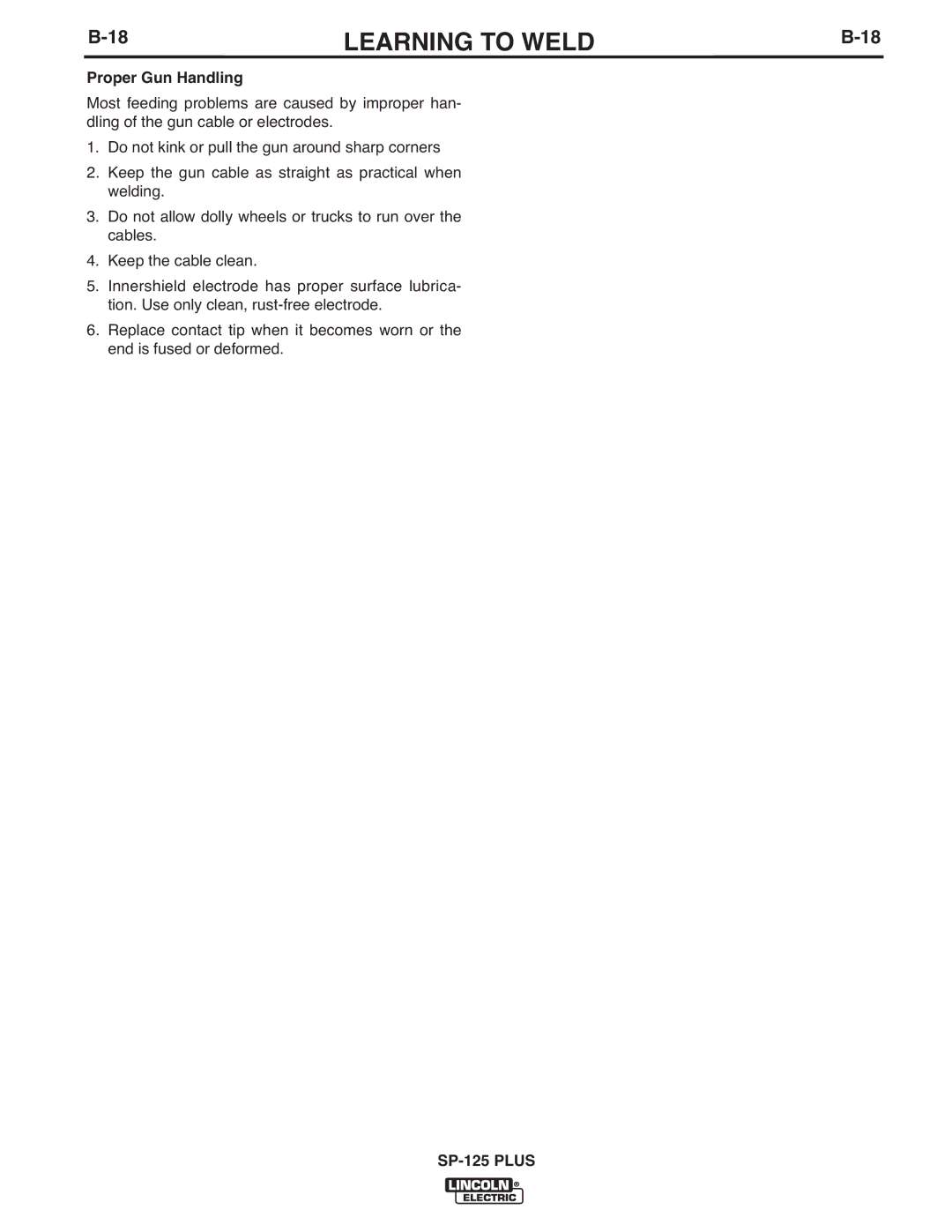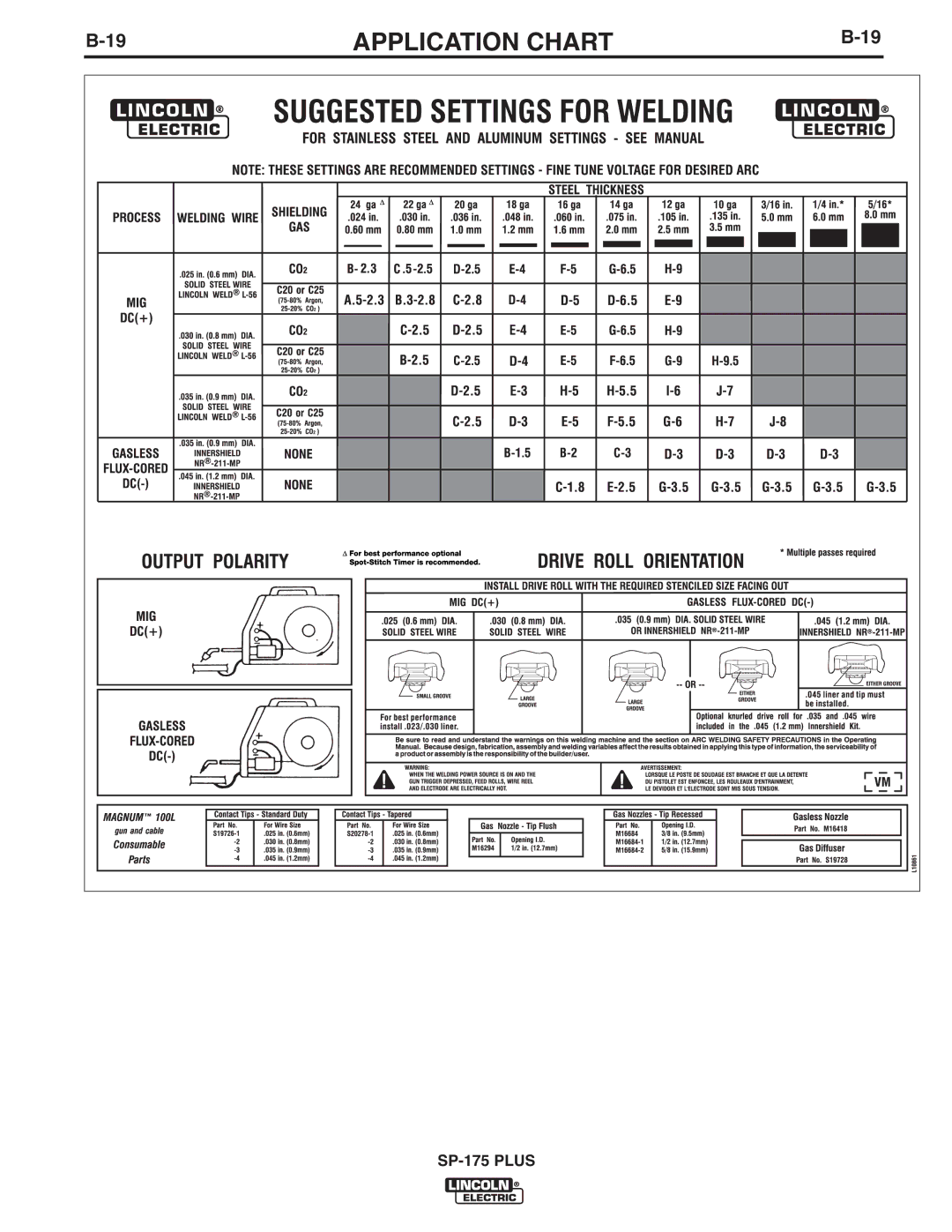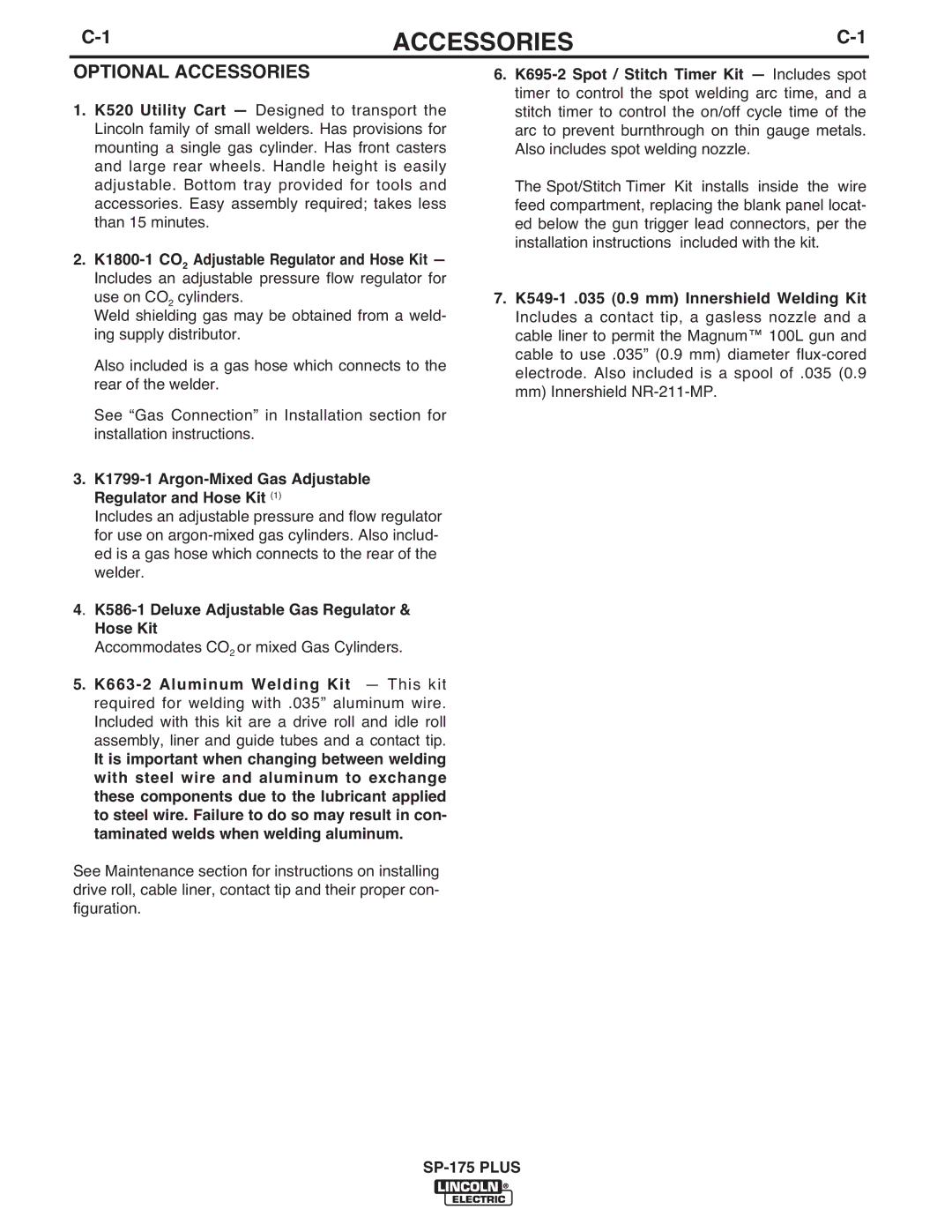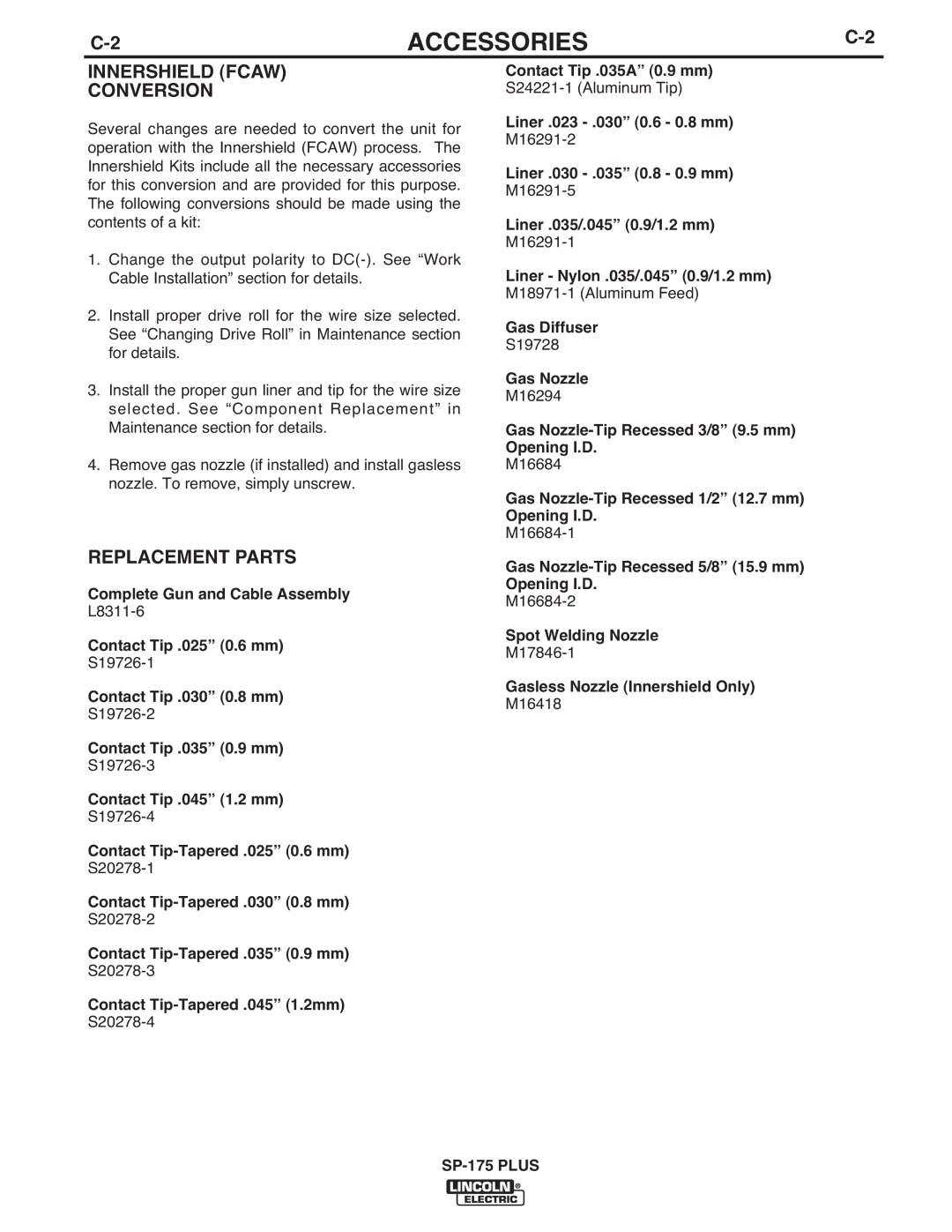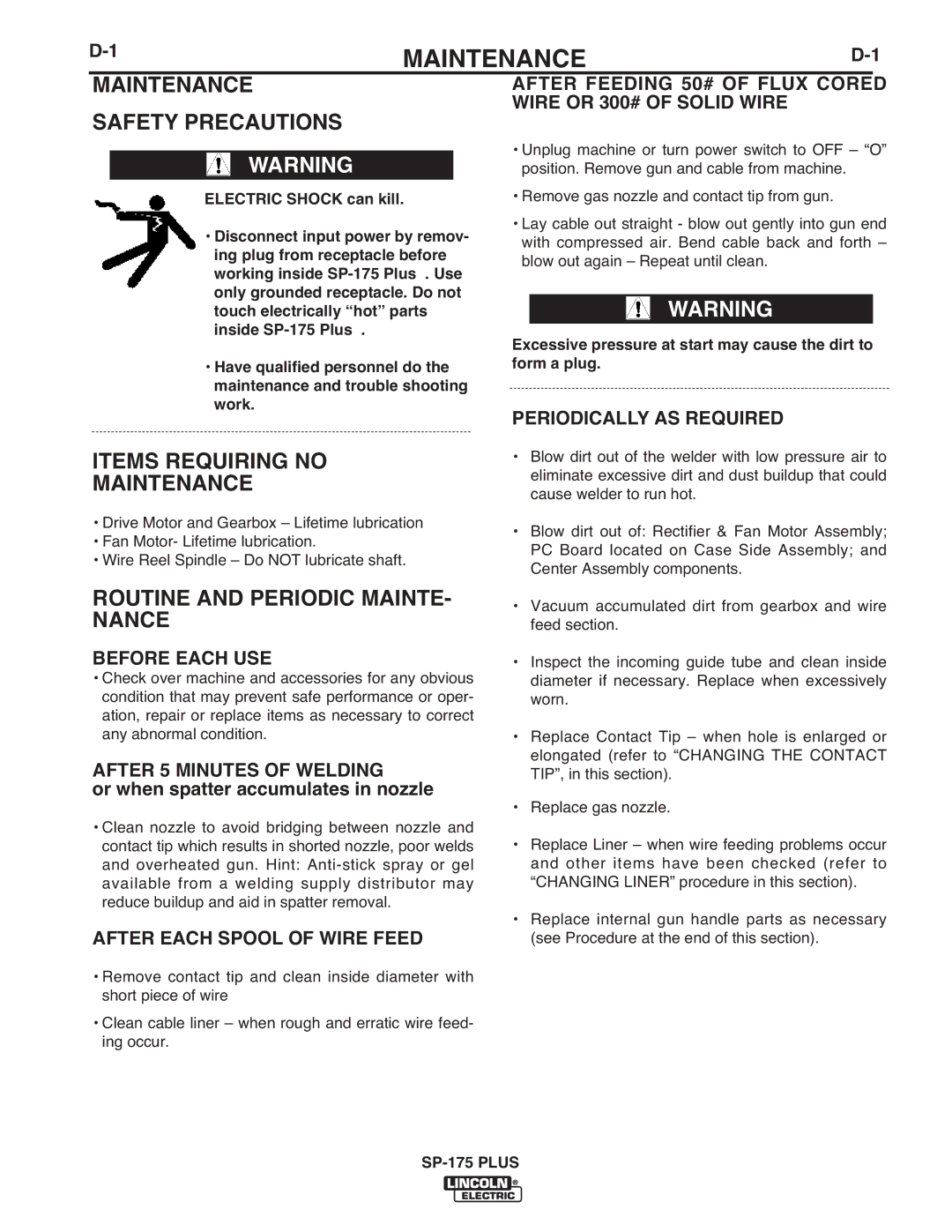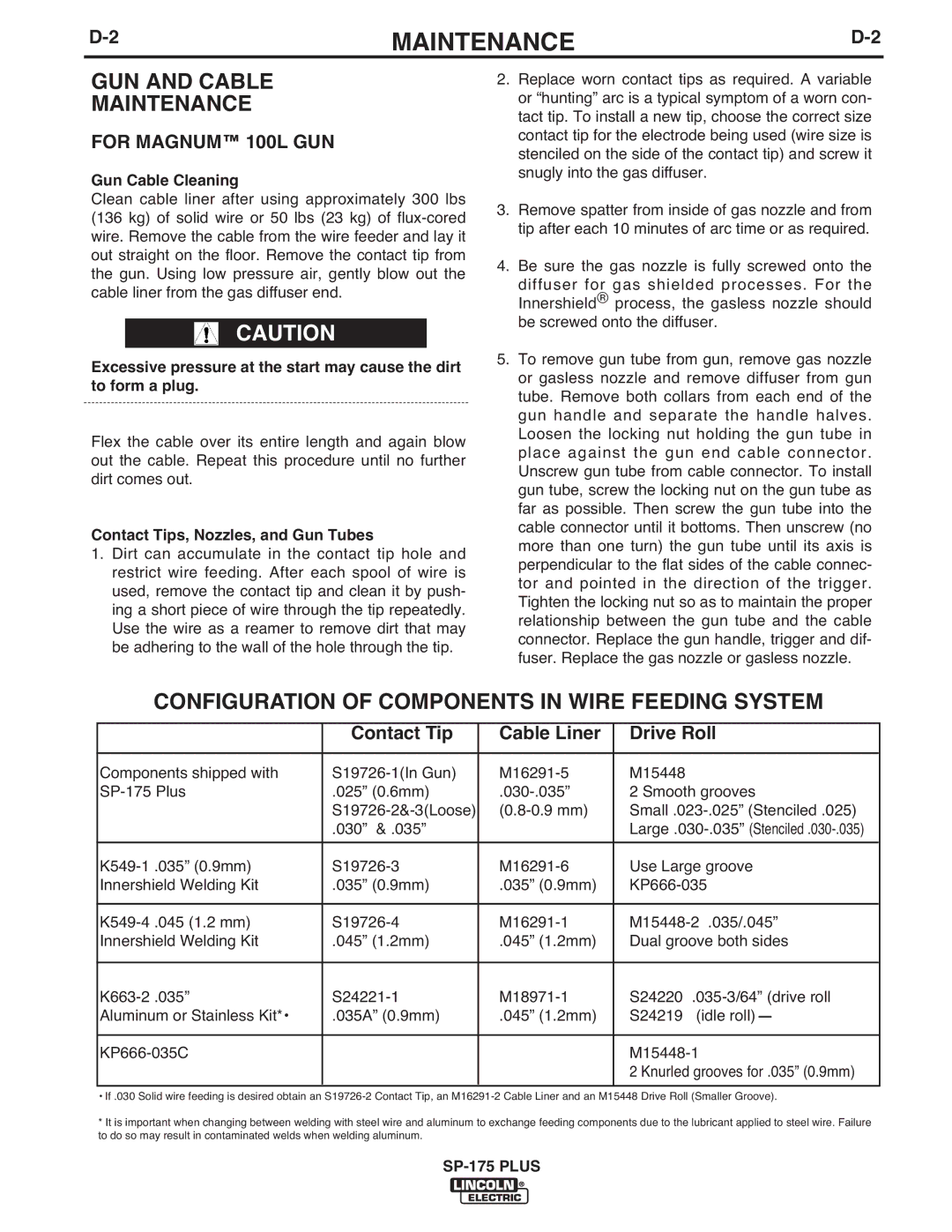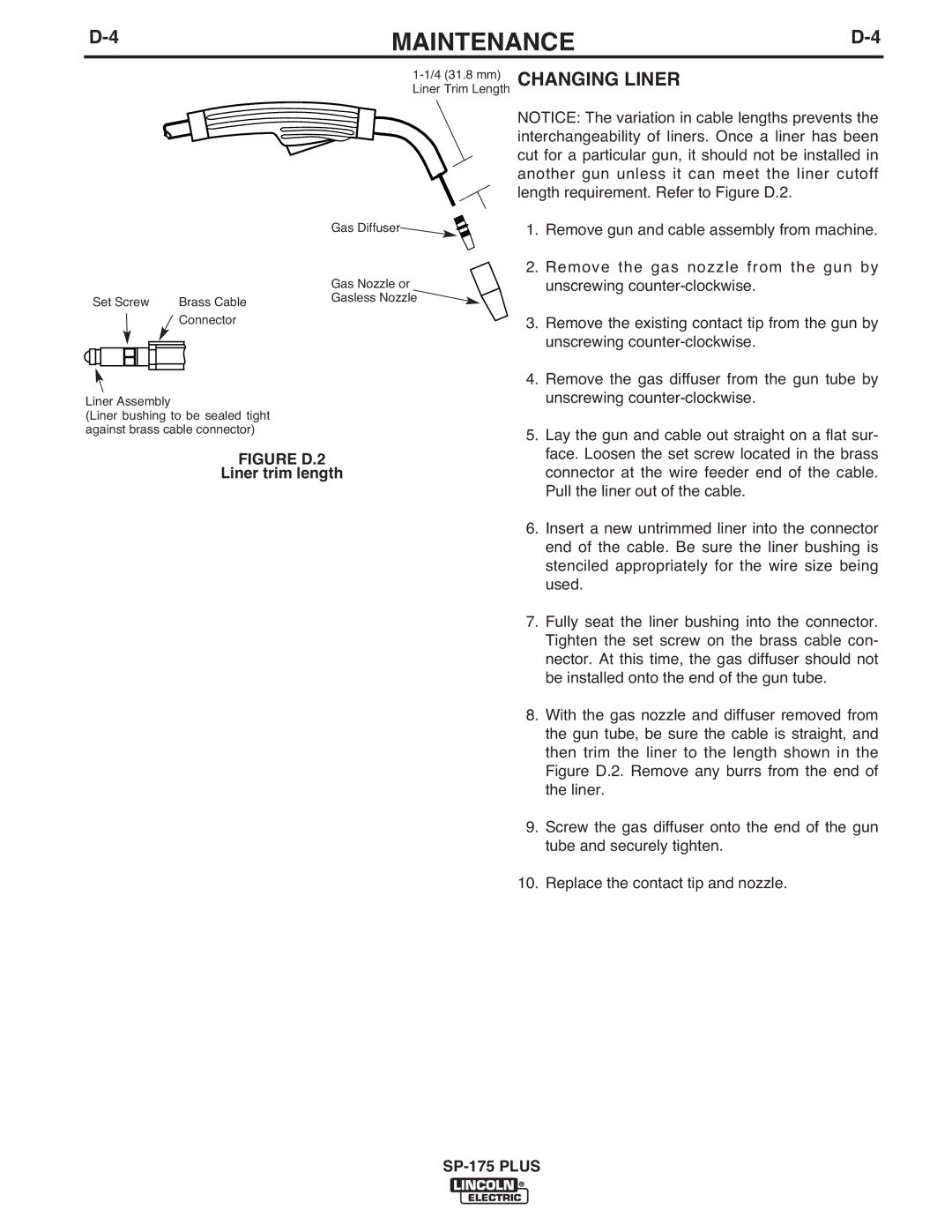
OPERATION |
WELDING OPERATIONS
1 | 2 |
WELDING AMP RANGE
3
SP-175 Plus
FIGURE B.1a
Refer to Figure B.1b
4.Circuit Breaker – Protects machine from damage if maximum output is exceeded. Button will extend out when tripped (Manual reset).
5.Optional
Mode Switch - Selects between Spot, Stitch, or Seam (normal welding) mode. Spot mode welds for an adjustable length of time (set by Time Control; see below) and then stops, whenever the gun trig- ger is depressed and held. Stitch mode cycles between welding and not welding for an adjustable length of time (also set by Time Control) while the gun trigger is depressed. In Seam mode the machine will weld continuously while the gun trig- ger is depressed. Releasing the gun trigger in any of the three modes will interrupt welding immedi- ately.
Time Control - In Spot mode, controls spot mode ON time between approximately .25 and 4.0 sec- onds. In Stitch mode, controls stitch mode ON time and OFF time simultaneously between .25 and 4.0 seconds each. This control is deactivated while in Seam mode.
FIGURE B.1b
SEQUENCE OF OPERATION
Wire Loading
Refer to Figure B.2 and B.3.
The machine power switch should be turned to the OFF (“O”) position before working inside the wire feed enclosure.
The machine is shipped from the factory ready to feed 8” (200 mm) diameter spools [2.2” (56 mm) max. width]. These spools fit on a 2” (50 mm) diameter spindle that has a
Note:When loading and removing the 8” Spools make sure that the wing nut (inside the wire spool spindle hub) is turned 90° from the wire spool spindle locking tab. If the wing nut is positioned in line with the locking tab, the tab cannot be depressed to load or unload the wire spool.
Load an 8” (200 mm) diameter spool on the wire spool spindle shown in Figure B.2.
To use 4” (100 mm) diameter spools, the 2” (50 mm) diameter spindle must be removed (See Figure B.3). Remove the wing nut and spacer at the end of the shaft and remove the outside plastic wire spool spin- dle. The spindle can be stored in the wire feed com- partment. A 4” (100 mm) diameter spool is mounted directly on the 5/8” (16 mm) diameter shaft and held in place with the previously removed hardware. Also make certain the start end of the wire, which may pro- trude through the side of the spool does not contact any metallic case parts.
FIGURE B.2
Wire Spool Spindle
Locking Tab
8” Wire Spool
4
5 |
Be sure that this stud engages
the hole in the wire spool.
Thumb
Screw
To wire drive
Wire Spool must be pushed all the way on the spindle so that the spindleʼs tab will hold it in place. The Wire Spool must rotate clock- wise when wire is dereeled.
